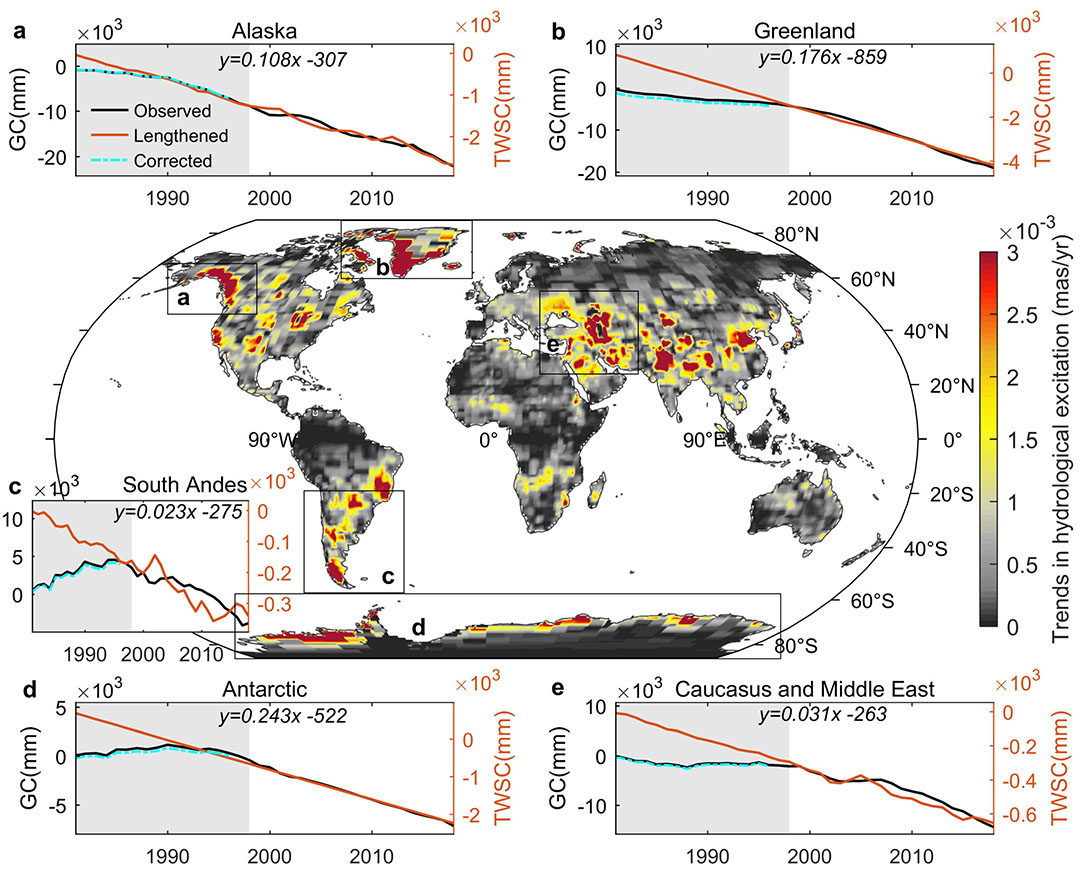
Human-induced climate change is accompanied by a variety of large-scale changes in the Earth system. In a recent study, Chinese scientists have now identified another profound effect caused by decades of human overconsumption of natural resources. They found that due to glacial melt, so much mass is being redistributed that it is having an impact on the migration of the geographic poles and thus the Earth’s axis.
The geographic poles in the north and south where the invisible rotation axis of the earth intersects the surface naturally migrate depending on the mass distribution and movements of the solid Earth, the atmosphere and the hydrosphere.
However, in the mid-1990s, there was a reversal and acceleration of the pole migration that could not be explained by known natural processes. In their current study, published in the journal Geophysical Research Letters, the researchers describe that the redistribution of water due to the loss of hundreds of billions of tons of ice per year, directed the pole migration from a southern to an eastern direction. Moreover, the speed of the shift was 17 times faster between 1995 and 2020 than between 1981 and 1995.

“The faster ice melting under global warming was the most likely cause of the directional change of the polar drift in the 1990s.”
Shanshan Deng, lead author of the study and researcher at the Institute of Geographical Sciences and Natural Resources Research, Chinese Academy of Sciences University.
That the polar wander is linked to the rapid loss of glaciers has already been proven following the strong melting events in 2005 and 2012, using gravity data provided by the GRACE satellite launched in 2002. In the current study, which goes back to the 1990s, the scientists found a way to look even further back in time. To do so, they calculated the total loss from the so-called terrestrial water storage, which includes all surface and subsurface water on land, including snow, glacial ice, groundwater, surface water and water in biomass.

Color intensity on the map shows where changes in water stored on land (mostly as ice) had the strongest effect on the movement of the poles from April 2004 to June 2020. Inset graphs plot the change in glacier mass (black) and the calculated change in water on land (blue) in the regions of largest influence. Graphic: Deng et al. 2021, Geophysical Research Letters/AGU
According to their calculations, the loss of ice from melting glaciers has the greatest effect on the polar shift. However, there is another aspect that is very likely contributing: the unsustainable extraction of groundwater for agricultural purposes. Once pumped to the Earth’s surface, eventually most of it ends up in the oceans, and its mass is distributed across the planet from a limited reservoir. According to a 2012 study by Pokhrel et al, 18 trillion tons of water were extracted from groundwater reservoirs over a period of about 50 years without being replenished.
The latest study highlights, once again, the scale of the impact human activity is having on our planet. Vincent Humphrey, a climate scientist at the University of Zurich, says: “It tells you how strong this mass change is — it’s so big that it can change the axis of the Earth.”
However, the migration of the Earth’s axis – four metres since 1980 – will not have a noticeable impact on life on Earth, as Humphrey explains. Only the length of the day could change by a few milliseconds.
Julia Hager, PolarJournal





